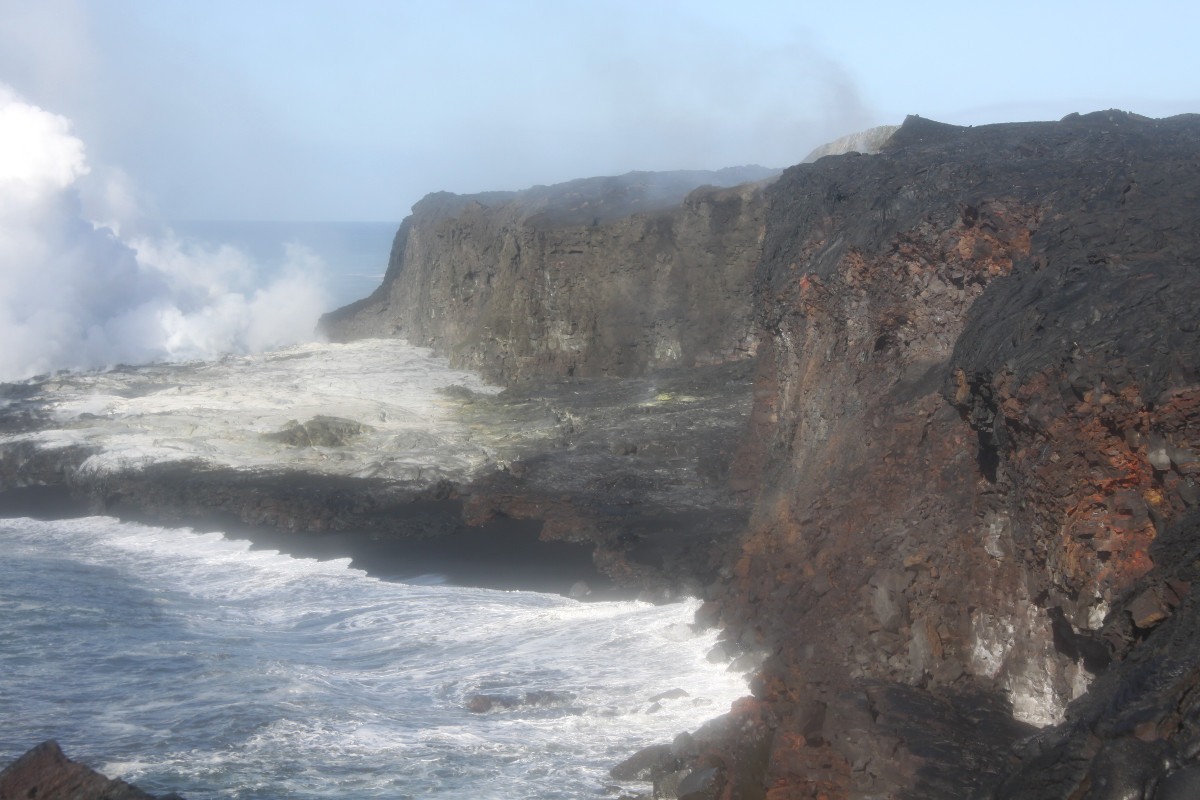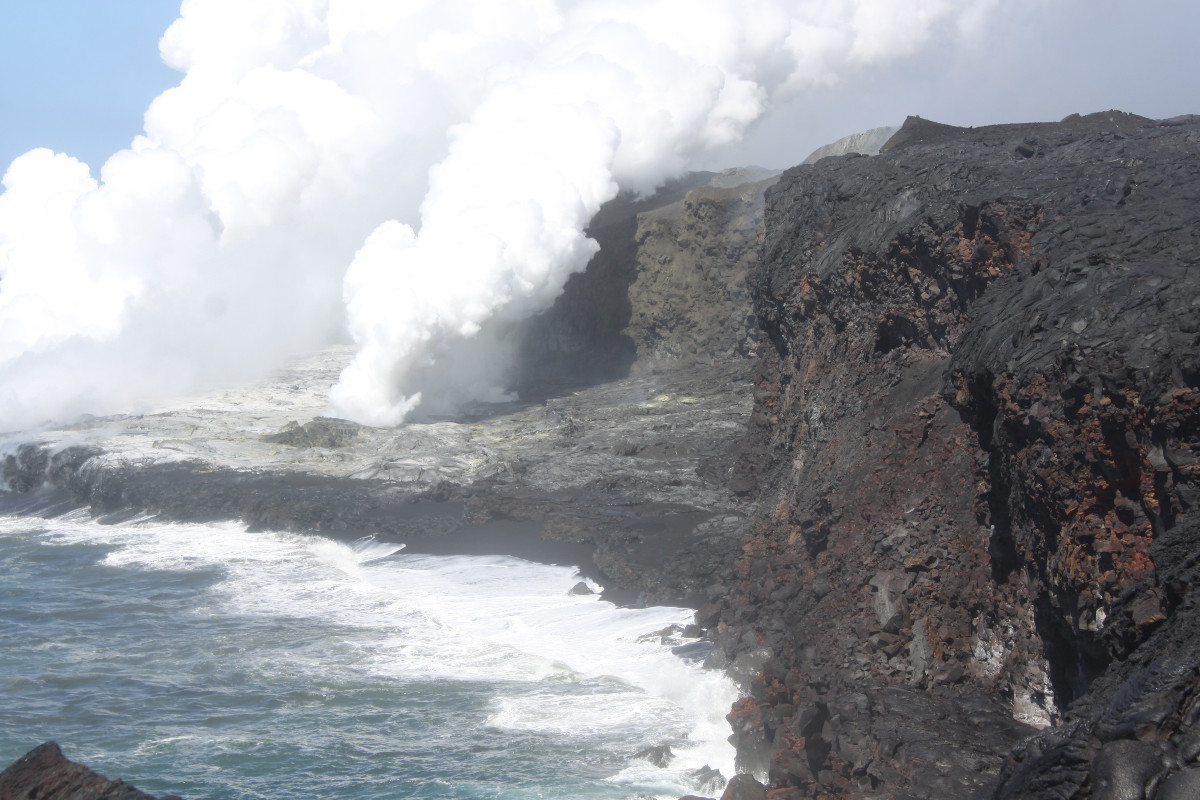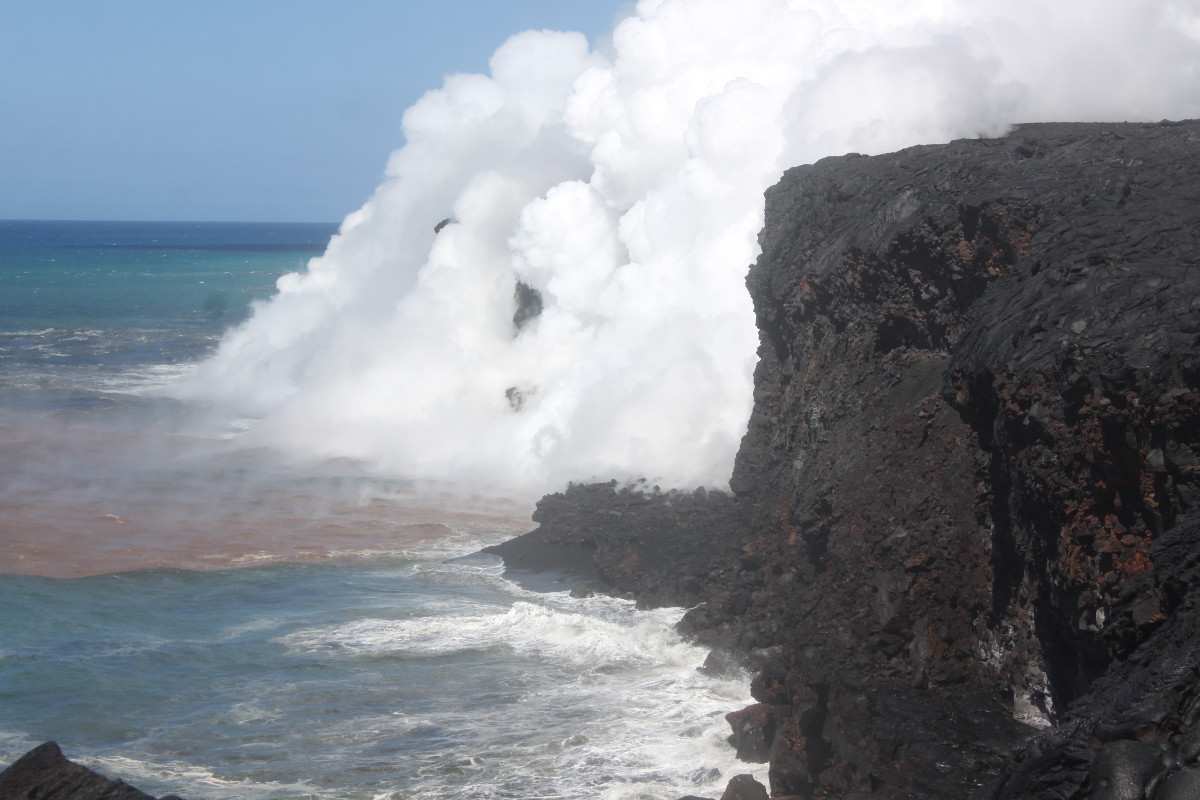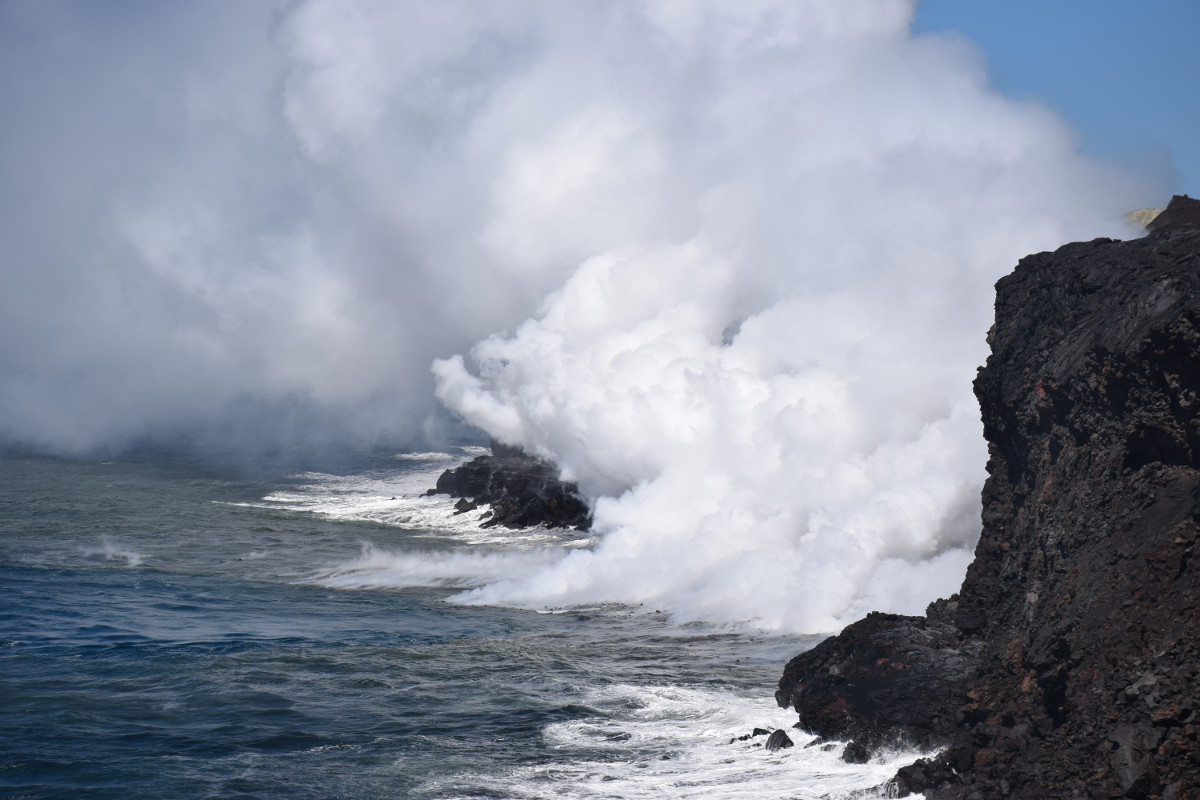(BIVN) – While the May 3 collapse of the Kamokuna lava delta was not a surprise, the speed in which the event occurred was.
USGS Hawaiian Volcano Observatory geologist was out on the field observing the aftermath of the delta collapse on Thursday. “What was interesting,” Patrick said in later a phone interview, “is how quickly it happened. Previous collapses we’ve seen operate in a piece meal fashion, over the course of hours. The time lapse camera that was capturing (the May 3rd) delta collapse showed that most of the delta collapsed within about five minutes.”
Before the event, the lava delta had shown signs of a pending collapse. “We’d seen cracks develop, and it actually looked like sagging in the front of the delta,” Pattrick said. “The front of the delta looked like it was slumping towards the sea.”
The delta began forming in late March. Patrick said there is no indication of a return of the fantastic lava “fire hose” that enthralled the world a few months ago. However, the collapse has exposed some active lava at the base of the sea cliff.
On Thursday, the USGS posted a sequence of photos taken from the time lapse camera positioned at the ocean entry.

(USGS) This image shows the lava delta at 7:50 a.m. HST, a couple of hours before the collapse.

(USGS) Between 9:35 and 9:40 a.m., a large steam plume appeared in the middle of Kamokuna lava delta in the area of large cracks noted in our April 27 image (see below). Weak fountaining or spattering likely occurred initially, because new tephra is visible in the steaming area, but that activity ended by 9:40 a.m. Images captured over the next 25 minutes show that the steam plume in the middle of the delta weakened, and the delta surface surrounding the steaming area subsided.

(USGS) Within five minutes, between 9:55 and 10:00 a.m. HST, nearly the entire delta disappeared, collapsing into the sea. The collapsed area cut back toward the sea cliff, past the largest crack on the delta. In this image, captured at 10:05 a.m., the seawater is brown and turbulent. Large blocks of steaming rocks are visible on top of a narrow slice of the remaining delta (center). These rocks were likely washed ashore by a small, localized tsunami generated by the collapse. During the next few hours, small pieces of the remnant delta continued to flake off and disappear into the ocean.

(USGS) This morning (May 4), the Kamokuna ocean entry was obscured by a thick steam plume at the base of the cliff. Sparse littoral bursts, occasionally visible through the plume, were the source of the floating, steaming lava fragments that can be seen in the ocean near the entry.
The collapse is a reminder that new land created by ocean entries is highly unstable and prone to collapse without warning, scientists say.

by Big Island Video News2:25 am
on at
STORY SUMMARY
HAWAII VOLCANOES NATIONAL PARK - It took only five minutes for nearly the entire delta to disappear into the sea on May 3, USGS Hawaiian Volcano Observatory scientist Matt Patrick said.